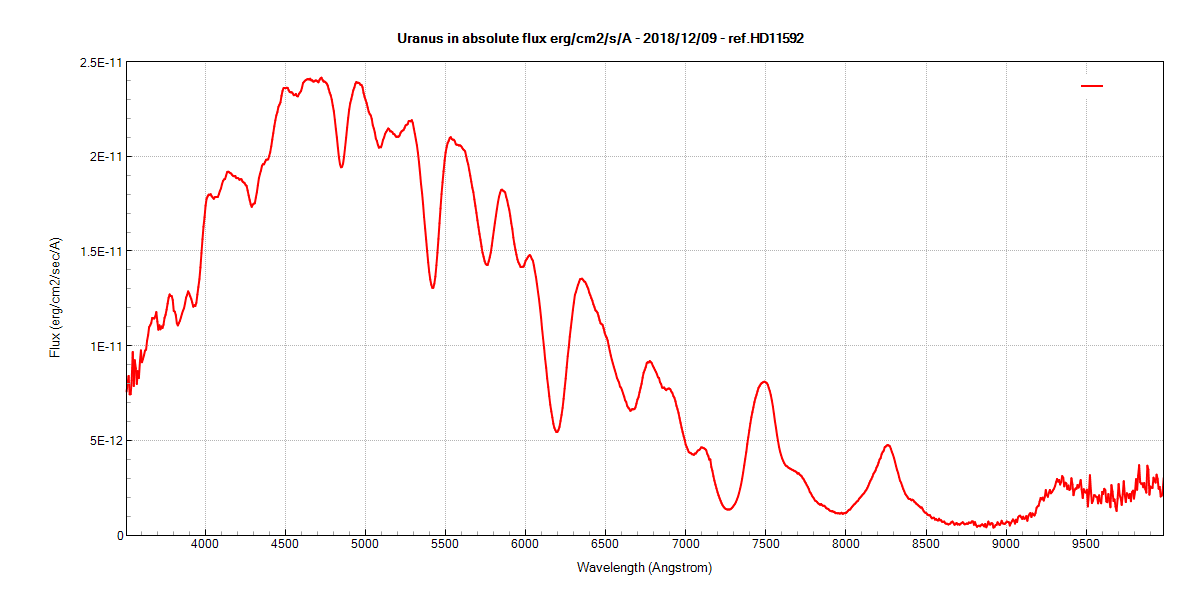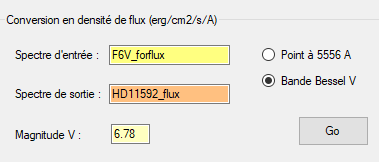
Usually, spectra are let with their intensity expressed in relative units. But they can also be calibrated in absolute flux, a unit to measure the real intensity of the incoming light flux from a star. The unit is an energy measure by square centimeter, for one second, in Angtröms : erg/cm2/s/A. In order to get more ways to compare my Uranus spectra over the years, I have tried to calculate such a flux calibration, using nearby stars.
It can be possible to use a star spectrum already expressed in absolute flux, taken from a library, above the Earth atmosphere, if available, and if the star is found at the same airmass than the object that must be calibrated. I don't know, and don't think, that the stars that I have observed as future references have been calibrated in absolute flux, so I have used a second method: I have transformed the spectra of those stars into "pseudo" standards expressed in absolute flux. This is possible thanks to the ISIS software, which can perform this transformation with a formulae using the catalogue V magnitude of the stars:

The first task is to express all spectra in analog for digital units (ADU), for one second only. As a mean to verify the calculation, I have built two standards with two different stars. One is HD10894, a 7,05 Vmag of spectral type B9, and HD11592, a 6,78 Vmag star of F6 type. Here are the three spectra in ADU for one second (click for full size):
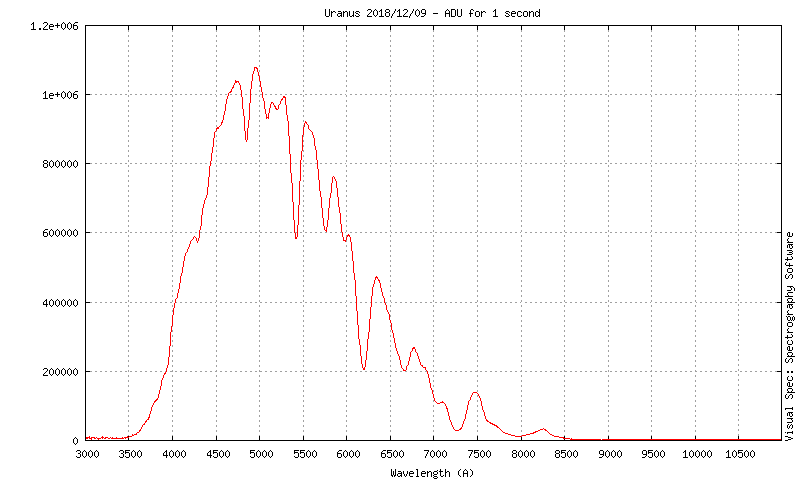 |
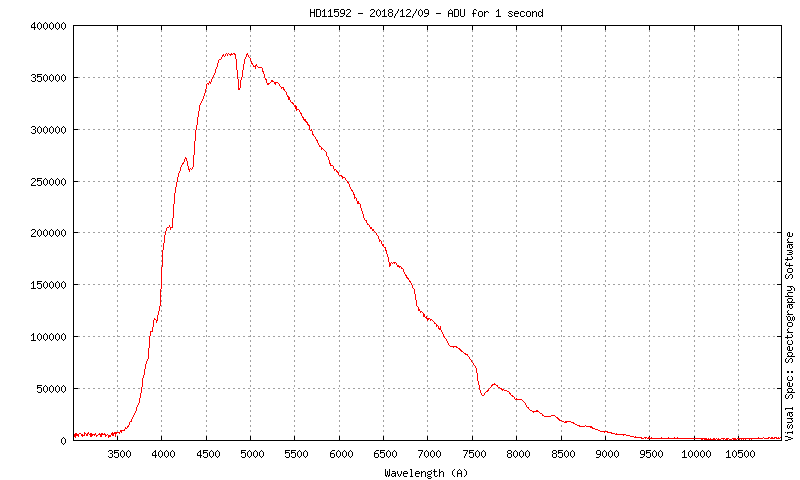 |
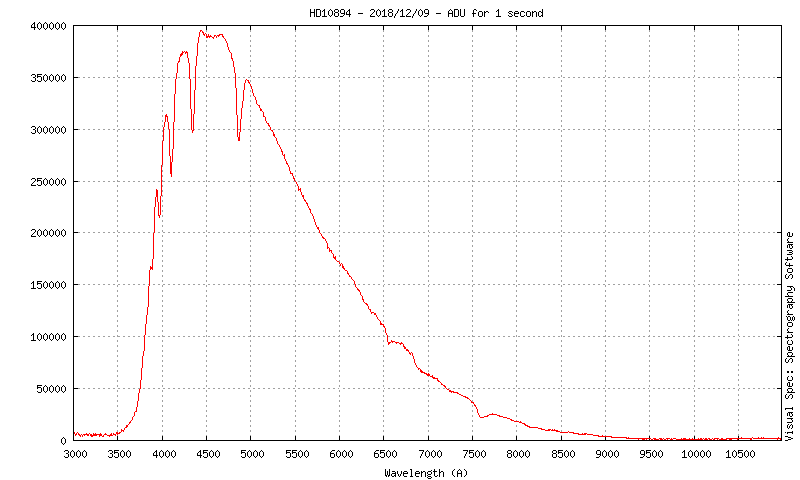 |
 |
At left is a comparison of the three
spectra expressed in ADU for 1 second. The scale in ADU is not
absolute; it is dependent from the capacity of the instrumentation
to reflect/record the incoming photons, and from the atmosphere
transparency at the moment where the observations were made. However, the three curves can be compared relatively to each other (this is just a first basic level of verification of the coherence of the data). There, the order of relative brightness is respected: Uranus (M=5,8) is one magnitude brighter than HD11592 (M=6,78) and from 500 to 600 nm a rough difference in brightness of 2,5 looks evident. |
|
 |
| By
dividing the spectrum of the star expressed in ADU for 1 second,
by the spectrum of the same star expressed in flux units, we get a
curve that presents the instrumental response+atmospheric
extension in flux units. This will serve to correct any adjacent
ADU spectrum. This "instrument response" is the usual way to
correct a spectrum but this time the intensity scale will not be
arbitrary. Note however that in order to avoid weird manipulations of the different spectra, this calculation does NOT correct absorption from the Earth atmosphere so the O2 and H2O bands will still be present in the results. |
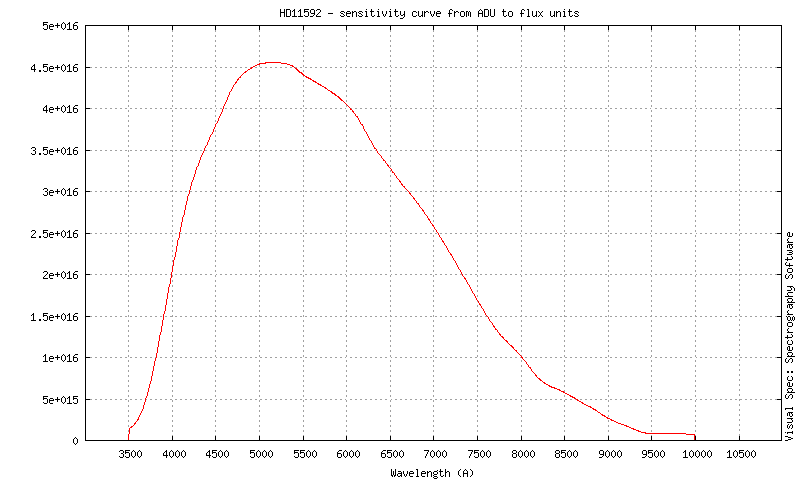 |
| By
dividing the spectrum of Uranus expressed in ADU for 1 second, by
the sensitivity curve above, we now obtain the spectrum of Uranus
expressed in flux units. |
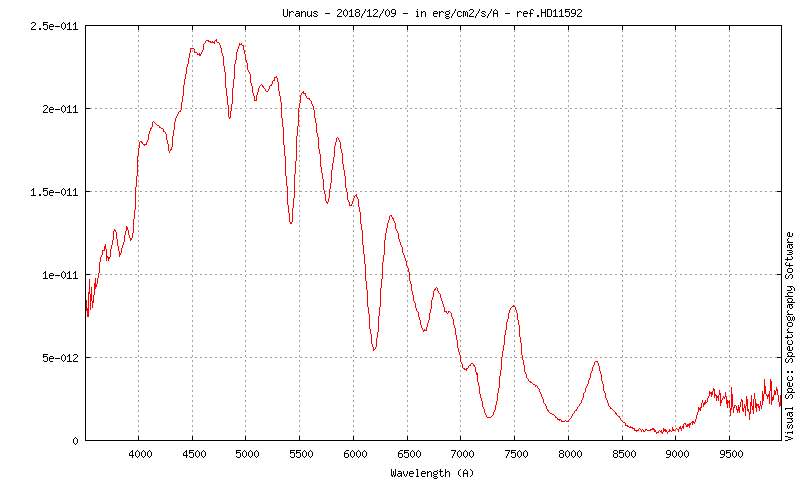 |
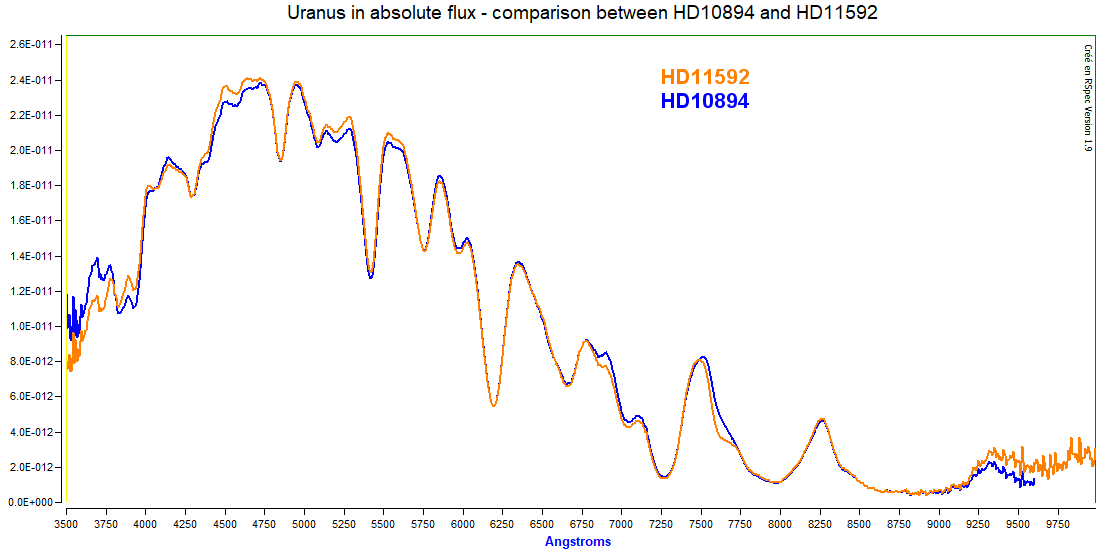 |
In order to verify the
operation, I have repeated the process but starting with HD10894
as a pseudo-standard. Despite the difference of magnitudes, the
same values are found, so the calculations look correct. There are some mild discrepancies especially at the UV and IR end, that come from the slight errors or variations I made during smoothing the curves when needed. As the small surge of intensity in UV on the curve calculated with HD10894 does not look real, I have kept the profile obtained with HD11592. |
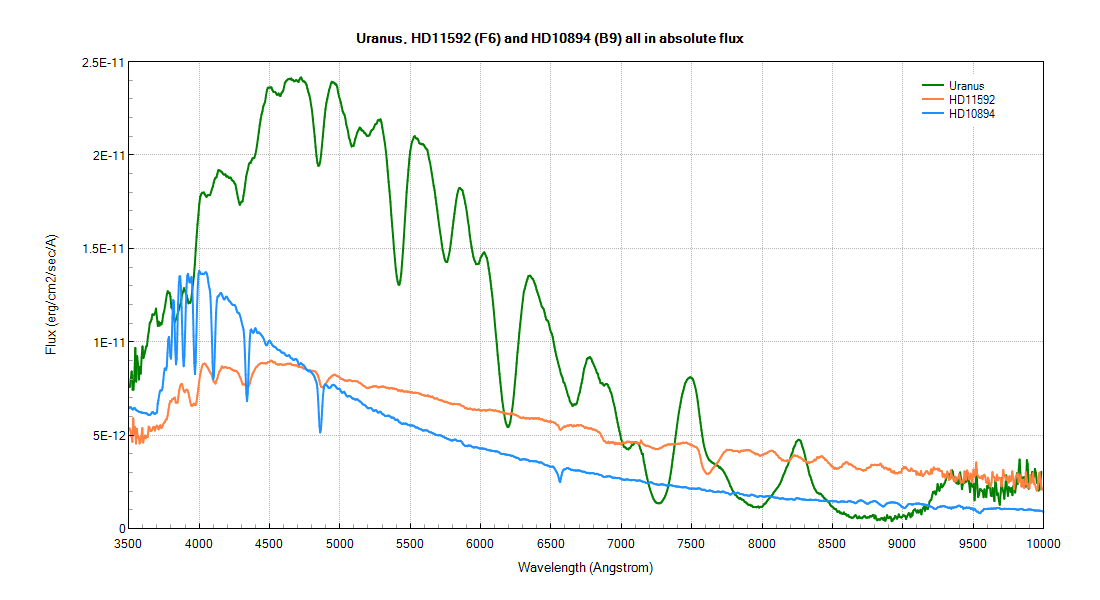 |
Now these are the three spectra expressed in flux units. We find again the differences already observed when we compared them in ADU ; this confirm that the conditions were photometric, a good news to perform photometry later. |
